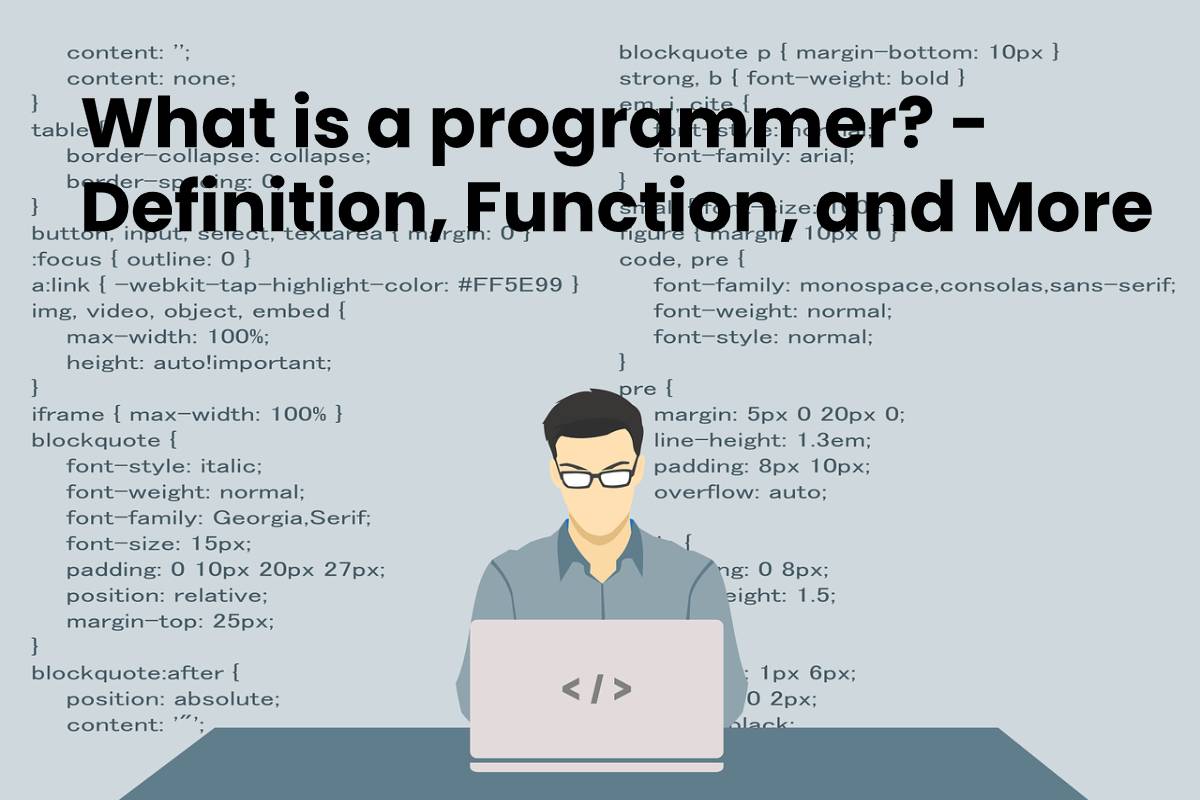

Beyond the Code: The Real Life of a Programmer
Who Are We Talking About? (A Quick Definition)
Alright, let’s cut to the chase. Programmers are the folks who turn caffeine into code—people who breathe, eat, and sleep the language of computers. They design, write, debug, and maintain software that runs everything from your smartphone app to the satellites orbiting Earth. Think of them as the secret‑hand— or it’s actually a keyboard— that makes digital dreams real.
What Do Programmers Actually Do? (Their Daily “Functions”)
- Back‑End Brilliance: Crafting the guts of a program—databases, servers, APIs—so that the user’s side stays smooth as butter.
- Front‑End Flair: Painting the interface you interact with, often with a splash of JavaScript, CSS, and a pinch of HTML‑5.
- Debugging the Dark Arts: Hunting bugs, fixing trouble spots, and writing tests to keep the code shipshape.
- Collaboration Cauldron: Working in squads, using version control (Git, anyone?) to juggle multiple hands on the same project.
- Innovation Incubator: Continually learning new languages, frameworks, and best practices because the tech timeline moves faster than a hummingbird.
The Analyst’s Angle: “Programmer Analyst”
Imagine a programmer who’s not just a coder but also a detective, a statistician, and a story‑teller all rolled into one. The Programmer Analyst listens to business needs, translates those into logical algorithms, and then prototypes them. They’re the bridge between the night‑deep code and the day‑light user stories.
Typical Daily Tasks of a Programmer Analyst
- Scrutinize user requirements—often turning vague wishes into concrete “must‑have” specifications.
- Design data models, write prototypes and demos to prove concepts.
- Collaborate with stakeholders while keeping the code quality high and the project on schedule.
- Grease the wheels of QA testing and roll out incremental releases.
- Hold open‑ended: staying ready to pivot when priorities shift.
Why These Roles Are Essential?
Without the crunching brains of a programmer and the insight of a programmer analyst, apps would still be static charts and spreadsheets. Together, they transform what should be a simple user action into a seamless digital experience, all while keeping the entire system robust, secure, and scalable.
Final Thought: Keep the Code Flowing
Programming is less about the syntax in the lines of code and more about solving puzzles, outsmarting bugs, and keeping future‑proof solutions alive. So whether you’re a budding coder or a seasoned analyst, remember: every line you write, every bug you squash, is a step toward a better, lighter, more connected world. Happy hacking!
Definition Programmer
Meet the Ghosts Behind the Screen
Think of a computer programmer as the behind‑the‑scenes wizard who turns plain‑old ideas into working software. They’re the people whose job is to write code, whether it’s a tiny script or a whole application.
What Makes a Programmer?
- They’re coders—the people who speak in lines and symbols, not in coffee cups.
- Some do it as a specialist, diving deep into one niche (like front‑end, back‑end, or mobile).
- Others are more like jack of all trades, writing for almost anything from a game to a healthcare tool.
Why We Need Them
Whether a superstar in a niche or a versatile all‑rounder, programmers keep our digital world humming. They’re the unsung heroes who turn dreams into code—one line at a time.
Functions of Programmer
What’s the Lowdown on a Web Programmer?
Picture this: a coder sits at a laptop, armed with a programming language, and gets to work turning ideas into little digital prototypes. The magic trick? A compiler—a program that understands that code and turns it into something the computer can actually run.
From Code to Everyday Language
In the good old days, a programmer’s job was all about translating high‑level concepts into the “language” that computers speak best—usually a mix of C, Java, or Python, depending on the project. No sweat: the compiler takes your fancy syntax and boils it down into something the machine can chew.
The Specialist Squad
When developers first started packing up in office cubicles, the software creation world looked a lot like a finely choreographed dance—each role had its own niche. There were:
- Front‑End Builders – masters of HTML, CSS, and those fancy JavaScript frameworks.
- Back‑End Gurus – the ones who make sure the server side works smoothly, using databases and API calls.
- And the Full‑Stack Flyers – the rare robots who juggle both sides.
These professions weren’t just homogenous scrapers; each had its own swagger and specialization.
Two Big Teams in the Tech Realm
Fast forward to today, and the software universe comfortably splits into two parent categories:
- Developers – all the coders, from newbie to seasoned pros. They turn ideas into code and keep systems humming.
- Tech Support & Operations – the behind‑the‑scenes champs who monitor servers, troubleshoot bugs, and make sure the digital world stays online.
And that’s the gist: whether you’re tearing up the code or keeping the tech ship sailing, you’re part of a vibrant, ever‑evolving tech crew!
Analyst
Meet the Problem‑Solving Analyst
Picture this: a ninja in a lab coat, juggling code snippets and data charts, armed with a laptop and an uncanny knack for spotting the sneaky bugs that hide in plain sight. That’s our analyst, the brain behind the software puzzle.
What Does the Analyst Do?
- Identify the bug: From a glitching UI to that mysterious crash that only happens on Tuesdays, the analyst pinpoints the exact root cause.
- Map the problem: Like a digital cartographer, they chart out the issue, drawing diagrams that make even the most complex code feel like a clear road map.
- Craft the solution: With the cool calm of a seasoned coder, they design fixes that fit seamlessly into the existing system.
Delivering the Fix via an Information System
Once the remedy is ready, the analyst doesn’t just hand it over to the dev team. Think of them as a librarian who not only delivers a book but also creates a digital catalog that ensures anyone can find the solution quickly. This step transforms the solution from a single patch into a fully documented, searchable resource accessible to the entire organization.
Bottom line: When software issues arise, the analyst is the mastermind who analyzes, designs, and delivers a polished fix—kind of like a superhero but with spreadsheets and code instead of a cape.
Programmer
Who’s the Boss? The Rise of the Analyst‑Programmer
There’s one role that once meant copying someone’s specs into code and calling it a day—the classic programmer.
But the story of that role just got a brand new twist.
From Silos to Cross‑Functional Teams
- Back in the day, analysts and programmers lived in separate rooms. The analyst wrote a doc, the programmer tried to interpret it, and more often than not the result was a mystery box that even the client didn’t know what it did.
- That split turned into a wall of misunderstanding, so the industry gave “bridge builders” a name: the analyst‑programmer.
- Now these people aren’t just hammering out syntax; they’re the ones who actually understand what the problem is and how to solve it.
Enter the Software Designer
With the analyst‑programmer on board, the next step was a new title that sounded fresher: software designer. These folks shape the project, not just assemble it. Think of them as the architects who decide the building’s blueprint before any bricks are laid.
Analysis vs. Design – The Real #1 Game
Analysis – the “what” squad. They define the problem: what the software should do, what the users need, what the constraints are.
Design – the “how” squad. They create the plan that turns those “what”s into a working product: the architecture, the modules, the interfaces.
Both stages exist because modern software production demands clear understanding + creative execution, all wrapped up in one agile process. And the modern tech crowd knows: a project that blends a solid problem definition with a smart solution plan wins the day.







